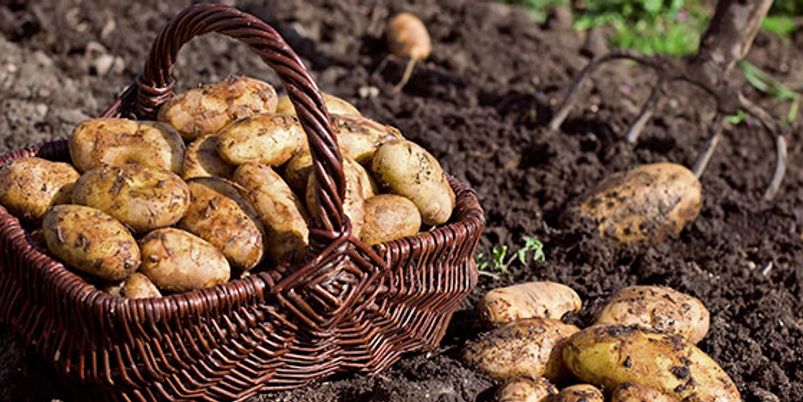It is good if you grow only a few beds of potatoes to entertain the family with young potatoes in the middle of summer. And what to do if the site is a decent size, and no weekend is not enough for watering?
Kyiv. Ukraine. Ukraine Gate – July 10, 2021 – Agriculture
It is impossible to say that this problem is solved at the wave of a hand, but it is still possible to save potatoes from overheating. It is necessary to work very well, but the harvest will be safe and will last until the next rains.
Hilling of potatoes
Hilling will help to protect the formed tubers from the scorching sun, keep water, and provide a good inflow of air to a potato root. It is usually held twice during the season, but nothing prevents you from doing the third, if possible.
Potatoes need to be pounded on clay soils and loams, on sandstones this procedure does not make sense.
The first hilling of potatoes is carried out after the stems rise above the ground by 5-8 cm in height. It stimulates the development of the root system, protects against return frosts.
The second hilling of potatoes is carried out 2-3 weeks after the first, but before flowering. The stems are slightly spread in different directions so that air and light fall freely to the base of the bush.
After flowering, you can spend the third hilling of potatoes, which quickly implements the task of weeding and loosening.
Mulching between rows
Mulching potatoes will also help minimize evaporation, which means that the soil will retain moisture. Of course, it can be grown in the straw at once, but if in the spring there was neither the time nor the desire to change the planting style, it is never too late to fix everything.
After hilling or loosening, it is necessary to cover the aisles with mown grass, hay, peat, straw, sawdust, or compost in a layer 20 cm thick. This will allow you to solve several problems at once – to reduce the amount of weeding, help the potatoes during drought and apply organic fertilizer.
Refusal of weeding
Of course, for every self-respecting gardener, weeds are tamed and removed at the stage of hatching the first leaves. But in this situation, it is not necessary to hurry on a potato pot with a hoe and a bucket. The fact is that the weeds, although they drink some of the water in rows, at the same time shade the potatoes and protect them from the scorching sun. Under their protection, moisture will stay even in the heat, which means that watering will be needed less often. But as soon as the long-awaited clouds come to your area, we still have to get rid of weeds.
Sowing of greens in between rows
Another way to artificially shade potato plantings is to sow greens in between rows. Like weeds, they retain moisture and shade near the potato roots but will be much more useful.
Greens need 5-7 weeks to grow, so do not procrastinate with their sowing, if you know that in your area is a hot summer.
In addition to these properties, green manures can also be an excellent fertilizer, loosen the soil and scare away some pests.
Potato pest control
Finally, the heat is terrible for your plantings also because at this time are particularly active in reproducing and feel comfortable pests such as Colorado potato beetles, wireworms, and nematodes. They can destroy a potential crop even faster than high temperatures and lack of moisture.
To avoid losses, try to regularly (at least once a week) inspect plantings and collect beetles and their larvae. And to combat wireworms, dig in the rows of bait. To do this, cut the potatoes into pieces, sprinkle them with a little earth and replace them daily, destroying pests that “eat” them.
And of course, if possible, try to water your potato plantings. Even this unpretentious crop desperately needs water.
Read Also: Young Potatoes in Sour Cream Sauce with Herbs and Garlic
Source: Ukrgate







